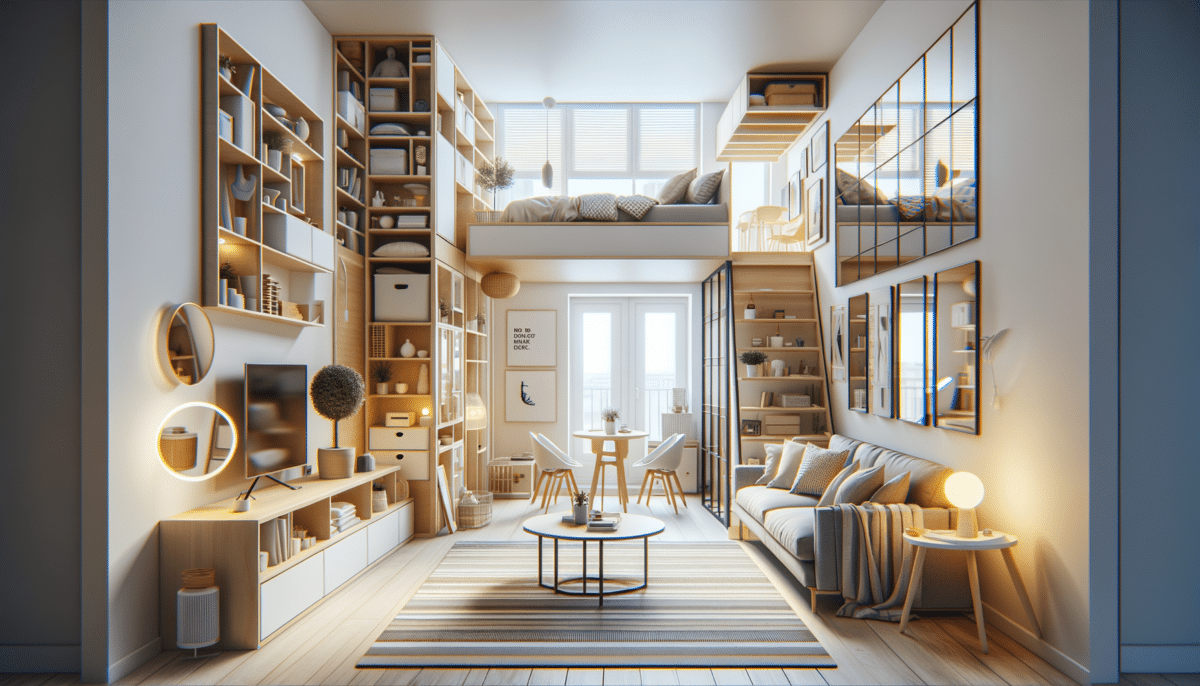Understanding the Challenges of Small Apartment Living
Living in a small apartment often means making the most out of limited space. The challenges are numerous, from finding adequate storage to maintaining a sense of openness and light. Many urban dwellers face these constraints, which can lead to creativity in design and organization. The key to thriving in such environments lies in understanding the specific challenges and addressing them with practical solutions.
One of the primary issues is storage. Small apartments typically come with limited closet space, making it essential to think outside the box. This often involves utilizing vertical space and investing in multifunctional furniture. For instance, beds with built-in drawers or sofas that convert into beds can serve dual purposes, maximizing utility without sacrificing comfort.
Another challenge is creating distinct areas within an open floor plan. Without walls to delineate spaces, it can be difficult to establish a separate living, dining, or sleeping area. Strategic placement of furniture and the use of rugs or room dividers can help define these spaces without the need for permanent alterations.
Innovative Furniture Solutions
Furniture plays a pivotal role in optimizing small living spaces. The market offers a variety of innovative solutions designed to save space while maintaining style and comfort. One popular option is modular furniture, which can be rearranged and adapted to fit different needs and occasions.
Consider a modular sofa that can be expanded for guests or reconfigured to create a cozy nook for reading. Similarly, folding tables and chairs can be stored away when not in use, freeing up valuable floor space. Wall-mounted desks and shelves are also excellent for keeping the floor clear while providing essential work and storage areas.
Another trend is furniture that serves multiple purposes. For example, a coffee table that doubles as a dining table or a bookshelf with a built-in ladder can be both functional and aesthetically pleasing. These pieces are particularly valuable in small spaces, where every square foot counts.
Maximizing Vertical Space
When floor space is limited, look upwards. Vertical space is often underutilized in small apartments, yet it offers a wealth of possibilities for storage and decoration. Installing shelves high on the walls can keep books, plants, and decorative items off the ground, creating a more open and airy feel.
In the kitchen, consider hanging pots and pans from a ceiling-mounted rack. This not only saves cabinet space but also adds a rustic charm to the room. Similarly, wall hooks can be used in entryways for coats and bags, keeping them organized and accessible.
Incorporating tall furniture, such as bookcases and wardrobes, can also help utilize vertical space effectively. Opt for pieces that reach the ceiling to maximize storage potential. Additionally, using mirrors strategically can enhance the perception of height and space, making rooms feel larger than they are.
Creative Storage Solutions
Finding creative storage solutions is crucial in small apartments. One effective strategy is to use storage boxes and baskets that fit under beds or sofas. These can hold seasonal clothing, extra linens, or other items not frequently used, keeping them out of sight but easily accessible.
Another approach is to repurpose everyday items for storage. For example, an old ladder can become a unique shelving unit, or vintage suitcases can serve as stylish storage for blankets and pillows. These solutions add character to your home while addressing storage needs.
Consider also the use of hidden storage. Furniture pieces with concealed compartments, such as ottomans or benches, can store items discreetly. This not only helps in keeping the apartment tidy but also maintains a clean and uncluttered aesthetic.
Designing with Light and Color
The right use of light and color can significantly impact the perception of space in a small apartment. Light colors on walls and ceilings can make rooms feel more expansive and open. White, soft pastels, and light grays are particularly effective in reflecting light and creating a sense of airiness.
Natural light is a valuable asset, so it’s important to maximize its presence. Avoid heavy drapes that block sunlight, opting instead for sheer curtains or blinds that can be easily adjusted. Mirrors can also enhance natural light by reflecting it around the room, adding depth and dimension.
Incorporating a mix of lighting sources, such as floor lamps, table lamps, and wall sconces, can create a warm and inviting atmosphere. Layering light helps in defining different areas of the apartment and adds to the overall ambiance, making the space feel more cohesive and comfortable.
